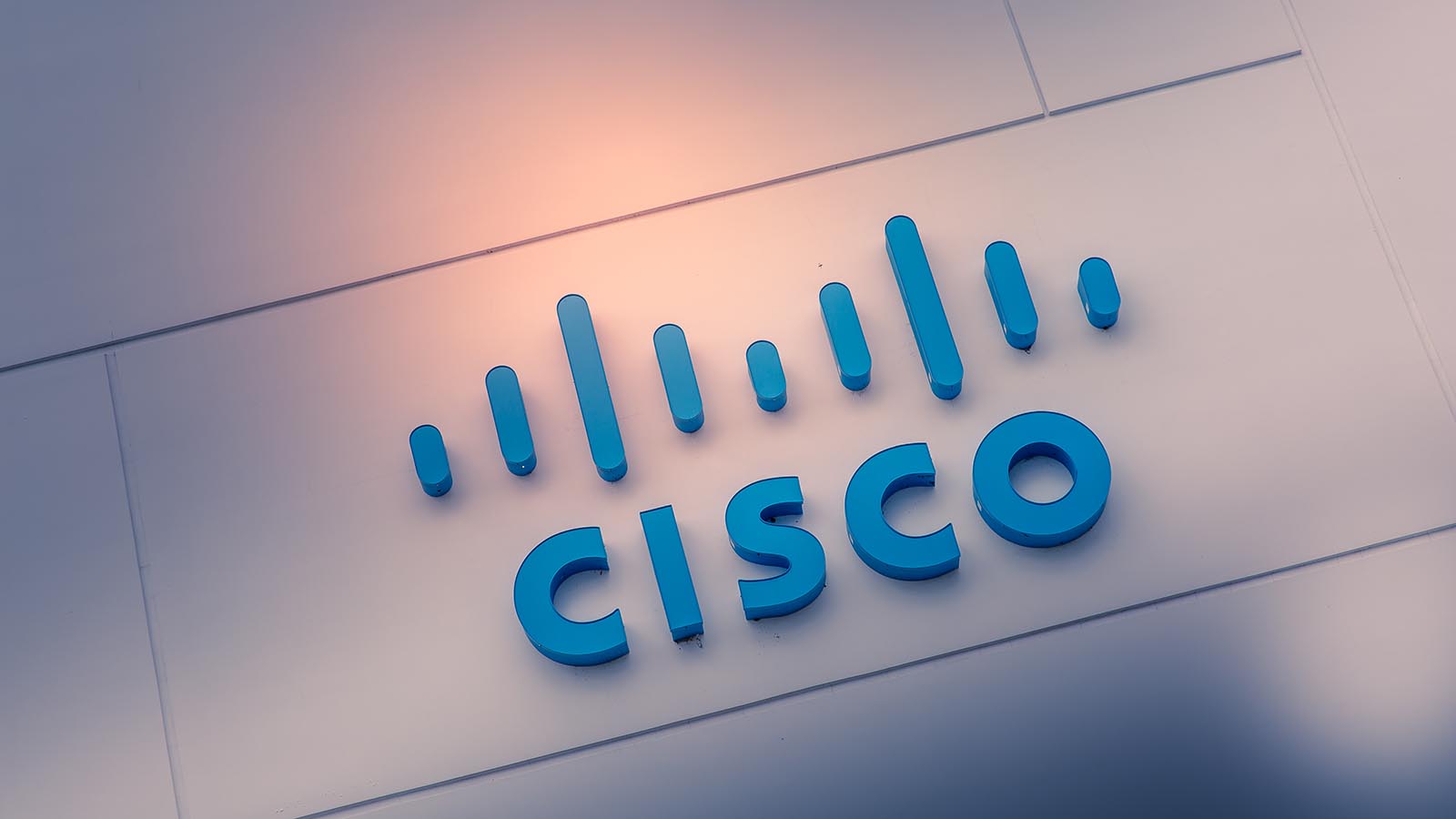Anyone want to own a tech stock with a 3.6% yield backed by earnings? Apparently not, because Cisco Systems (NASDAQ:CSCO) can’t catch a bid.

The maker of networking gear and software is down almost 17% so far in 2020, due to open March 4 at about $40 per share. At a time when no government bonds yield anywhere near 2%, Cisco’s dividend of 36 cents/share offers a yield of 3.6%, and the stock is still falling. Maybe after Tuesday’s historic Treasuries drop below 1%, that CSCO stock yield will finally draw some attention.
Cisco had earnings of $2.9 billion, 68 cents per share, on revenue of $12 billion for the January quarter, reported Feb. 12. The stock still fell over what analysts termed a “disappointing” outlook.
Tech S-l-o-w-down?
If Cisco deserves its present valuation, it’s due to a slowdown in tech spending that should impact every other equipment vendor. CEO Chuck Robbins called it “a bit of a pause,” with weakness among both service providers and in emerging markets.
In the Cisco world, service providers mostly represent wired networks, the former telephone companies that Cisco replaced in the 1990s. These companies connect to clouds, but don’t run them.
Cisco is acting fast against lower profits, launching a new round of layoffs to pare the company’s 75,000-strong workforce.
None of this is completely unexpected. For years, Cisco has been trying to transform itself from a hardware maker into a software provider. Products that once filled rooms are now boards and racks. The company’s newest hardware product, Cisco One, reduces everything down to a chip set.
The Software Problem
This leads us to the company’s real problem: software.
Cisco’s software revenues are on the rise. It’s just that those increases are being matched by hardware sale decreases.
Beyond that there is the continuing fight against vulnerabilities. The latest, called Kr00K, lets attackers grab whole data frames through WiFi chips made by Broadcom (NASDAQ:AVGO) and Cypress Semiconductor (NASDAQ:CY). Kr00K impacts at least 14 Cisco devices. This is the risk when you’re both a hardware and software vendor. The folks in the latter group clean up after those in the former.
Cisco is hoping for big things from the new SecureX security platform. This puts a single interface in front of security products from Cisco and others. It’s a way to get in front of and even on top of changing security problems. Analysts are calling the product transformative but time will tell.
For now, security is the big hole in Robbins’ plan to make Cisco a software giant. Cisco is down more than 22% over the last year, while stocks in the SPDR S&P Kensho Future Security ETF (NYSEARCA:BUG) are up 3.4%. Cisco’s last big security acquisition was Duo Security in 2018, which creates two-key authentication systems. If the company can’t improve security on its own, it will need to make a big acquisition to fill the void.
The Bottom Line on Cisco Stock
Cisco has problems it’s aware of and it’s dealing with.
But turning things like SecureX and Cisco One into recurring revenue will take time. The company is asking companies who are strapped for cash to make big changes in how they run and secure their networks. This comes at a time when the service providers the company depends on for recurring revenue are calling a halt to wired network upgrades.
These may just be short-term problems. Cisco stock is dirt cheap for a big tech name, and it’s cheap for a reason. But it’s still hard to believe no one wants a 3.6% yield, backed by earnings, in the technology sector.
Dana Blankenhorn has been a financial and technology journalist since 1978. His latest book is Technology’s Big Bang: Yesterday, Today and Tomorrow with Moore’s Law, essays on technology available at the Amazon Kindle store. Write him at danablankenhorn@gmail.com or follow him on Twitter at @danablankenhorn. As of this writing he owned shares in CSCO.
